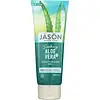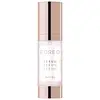What's inside
What's inside
 Key Ingredients
Key Ingredients

 Benefits
Benefits

 Concerns
Concerns

 Ingredients Side-by-side
Ingredients Side-by-side

Aloe Barbadensis Leaf Juice
Skin ConditioningCarbomer
Emulsion StabilisingGluconolactone
Skin ConditioningPotassium Hydroxide
BufferingGlycerin
HumectantPolysorbate 20
EmulsifyingPhenoxyethanol
PreservativePanthenol
Skin ConditioningAllantoin
Skin ConditioningArginine
MaskingMenthol
MaskingSodium Phytate
Water
Skin ConditioningAlcohol
AntimicrobialCalcium Gluconate
HumectantSodium Benzoate
MaskingAmyl Cinnamal
PerfumingBenzyl Benzoate
AntimicrobialBenzyl Salicylate
PerfumingParfum
MaskingHexyl Cinnamal
PerfumingLimonene
PerfumingLinalool
PerfumingAloe Barbadensis Leaf Juice, Carbomer, Gluconolactone, Potassium Hydroxide, Glycerin, Polysorbate 20, Phenoxyethanol, Panthenol, Allantoin, Arginine, Menthol, Sodium Phytate, Water, Alcohol, Calcium Gluconate, Sodium Benzoate, Amyl Cinnamal, Benzyl Benzoate, Benzyl Salicylate, Parfum, Hexyl Cinnamal, Limonene, Linalool
Water
Skin ConditioningGlycerin
HumectantPropanediol
SolventCyclopentasiloxane
EmollientDiglycerin
HumectantXylitol
HumectantPentylene Glycol
Skin ConditioningButylene Glycol
HumectantPEG/PPG-17/6 Copolymer
SolventGlyceryl Polymethacrylate
Glycereth-26
HumectantPEG/PPG-14/7 Dimethyl Ether
Skin ConditioningSqualane
EmollientHyaluronic Acid
HumectantSodium Hyaluronate
HumectantSodium Hyaluronate Crosspolymer
HumectantHydrolyzed Hyaluronic Acid
HumectantBetaine
HumectantOctyldodeceth-16
EmulsifyingGlyceryl Glucoside
HumectantPropylene Glycol
HumectantCaprylyl Glycol
EmollientCarbomer
Emulsion StabilisingTriethanolamine
BufferingAcacia Senegal Gum
MaskingGelatin
Panthenol
Skin ConditioningXanthan Gum
EmulsifyingTrehalose
HumectantUrea
BufferingEthylhexylglycerin
Skin ConditioningAdenosine
Skin Conditioning1,2-Hexanediol
Skin ConditioningSodium PCA
HumectantSerine
MaskingGlucose
HumectantAlgin
MaskingDisodium Phosphate
BufferingGlyceryl Polyacrylate
Pullulan
Hydrolyzed Glycosaminoglycans
HumectantPotassium Phosphate
BufferingCI 14700
Cosmetic ColorantBenzyl Glycol
SolventRaspberry Ketone
MaskingWater, Glycerin, Propanediol, Cyclopentasiloxane, Diglycerin, Xylitol, Pentylene Glycol, Butylene Glycol, PEG/PPG-17/6 Copolymer, Glyceryl Polymethacrylate, Glycereth-26, PEG/PPG-14/7 Dimethyl Ether, Squalane, Hyaluronic Acid, Sodium Hyaluronate, Sodium Hyaluronate Crosspolymer, Hydrolyzed Hyaluronic Acid, Betaine, Octyldodeceth-16, Glyceryl Glucoside, Propylene Glycol, Caprylyl Glycol, Carbomer, Triethanolamine, Acacia Senegal Gum, Gelatin, Panthenol, Xanthan Gum, Trehalose, Urea, Ethylhexylglycerin, Adenosine, 1,2-Hexanediol, Sodium PCA, Serine, Glucose, Algin, Disodium Phosphate, Glyceryl Polyacrylate, Pullulan, Hydrolyzed Glycosaminoglycans, Potassium Phosphate, CI 14700, Benzyl Glycol, Raspberry Ketone
Ingredients Explained
These ingredients are found in both products.
Ingredients higher up in an ingredient list are typically present in a larger amount.
Carbomer is a polymer of acrylic acid. Its main role is to create a gel consistency.
A high amount of carbomer can cause pilling or balling up of products. Don't worry, most products contain 1% or less of carbomer.
Glycerin is already naturally found in your skin. It helps moisturize and protect your skin.
A study from 2016 found glycerin to be more effective as a humectant than AHAs and hyaluronic acid.
As a humectant, it helps the skin stay hydrated by pulling moisture to your skin. The low molecular weight of glycerin allows it to pull moisture into the deeper layers of your skin.
Hydrated skin improves your skin barrier; Your skin barrier helps protect against irritants and bacteria.
Glycerin has also been found to have antimicrobial and antiviral properties. Due to these properties, glycerin is often used in wound and burn treatments.
In cosmetics, glycerin is usually derived from plants such as soybean or palm. However, it can also be sourced from animals, such as tallow or animal fat.
This ingredient is organic, colorless, odorless, and non-toxic.
Glycerin is the name for this ingredient in American English. British English uses Glycerol/Glycerine.
Learn more about GlycerinPanthenol is a common ingredient that helps hydrate and soothe the skin. It is found naturally in our skin and hair.
There are two forms of panthenol: D and L.
D-panthenol is also known as dexpanthenol. Most cosmetics use dexpanthenol or a mixture of D and L-panthenol.
Panthenol is famous due to its ability to go deeper into the skin's layers. Using this ingredient has numerous pros (and no cons):
Like hyaluronic acid, panthenol is a humectant. Humectants are able to bind and hold large amounts of water to keep skin hydrated.
This ingredient works well for wound healing. It works by increasing tissue in the wound and helps close open wounds.
Once oxidized, panthenol converts to pantothenic acid. Panthothenic acid is found in all living cells.
This ingredient is also referred to as pro-vitamin B5.
Learn more about PanthenolWater. It's the most common cosmetic ingredient of all. You'll usually see it at the top of ingredient lists, meaning that it makes up the largest part of the product.
So why is it so popular? Water most often acts as a solvent - this means that it helps dissolve other ingredients into the formulation.
You'll also recognize water as that liquid we all need to stay alive. If you see this, drink a glass of water. Stay hydrated!
Learn more about Water